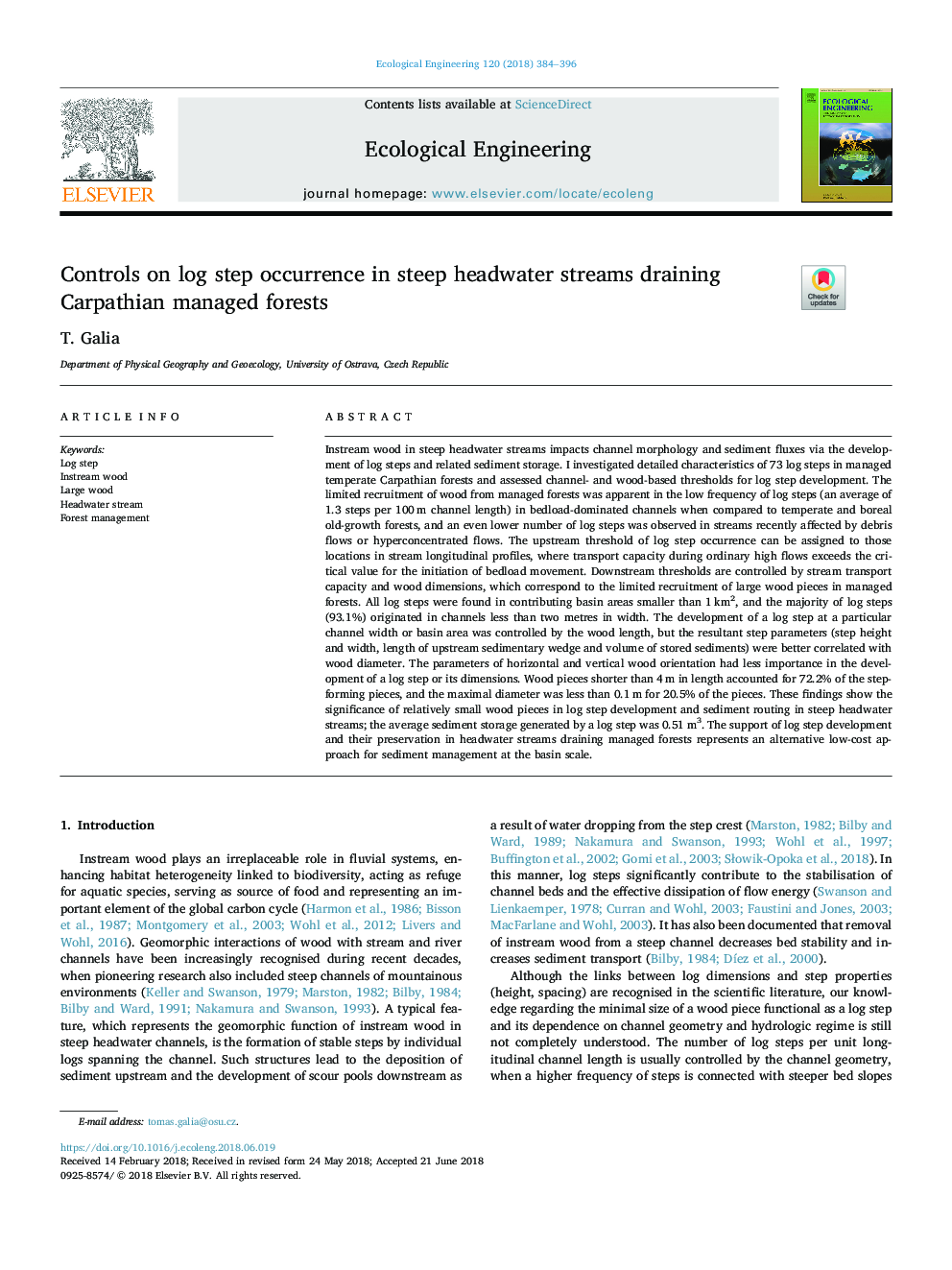| Article ID | Journal | Published Year | Pages | File Type |
|---|---|---|---|---|
| 8847822 | Ecological Engineering | 2018 | 13 Pages |
Abstract
Instream wood in steep headwater streams impacts channel morphology and sediment fluxes via the development of log steps and related sediment storage. I investigated detailed characteristics of 73 log steps in managed temperate Carpathian forests and assessed channel- and wood-based thresholds for log step development. The limited recruitment of wood from managed forests was apparent in the low frequency of log steps (an average of 1.3 steps per 100â¯m channel length) in bedload-dominated channels when compared to temperate and boreal old-growth forests, and an even lower number of log steps was observed in streams recently affected by debris flows or hyperconcentrated flows. The upstream threshold of log step occurrence can be assigned to those locations in stream longitudinal profiles, where transport capacity during ordinary high flows exceeds the critical value for the initiation of bedload movement. Downstream thresholds are controlled by stream transport capacity and wood dimensions, which correspond to the limited recruitment of large wood pieces in managed forests. All log steps were found in contributing basin areas smaller than 1â¯km2, and the majority of log steps (93.1%) originated in channels less than two metres in width. The development of a log step at a particular channel width or basin area was controlled by the wood length, but the resultant step parameters (step height and width, length of upstream sedimentary wedge and volume of stored sediments) were better correlated with wood diameter. The parameters of horizontal and vertical wood orientation had less importance in the development of a log step or its dimensions. Wood pieces shorter than 4â¯m in length accounted for 72.2% of the step-forming pieces, and the maximal diameter was less than 0.1â¯m for 20.5% of the pieces. These findings show the significance of relatively small wood pieces in log step development and sediment routing in steep headwater streams; the average sediment storage generated by a log step was 0.51â¯m3. The support of log step development and their preservation in headwater streams draining managed forests represents an alternative low-cost approach for sediment management at the basin scale.
Related Topics
Life Sciences
Agricultural and Biological Sciences
Ecology, Evolution, Behavior and Systematics
Authors
T. Galia,
